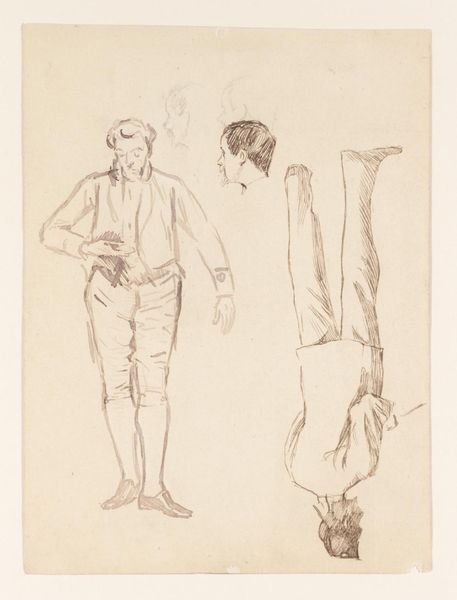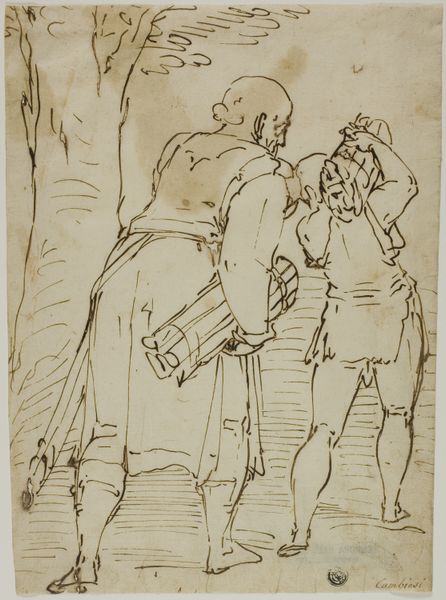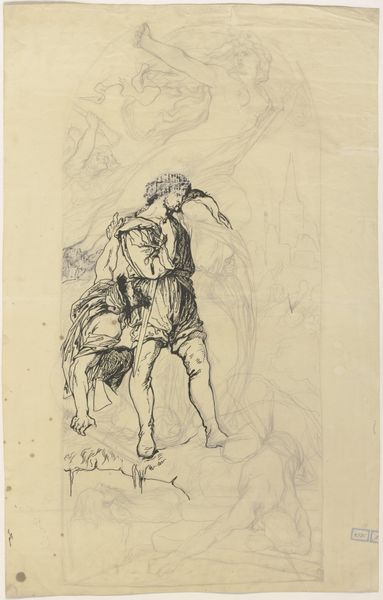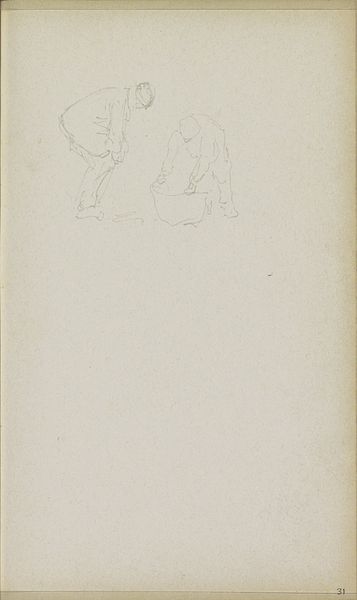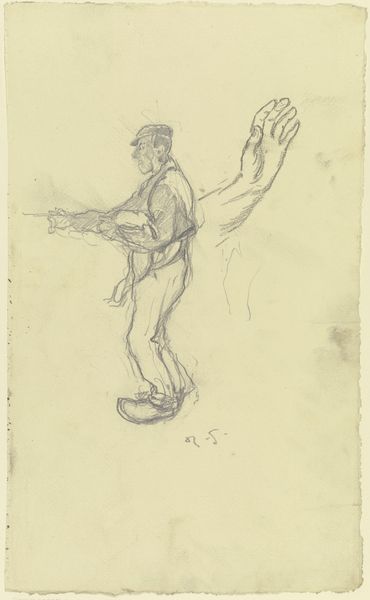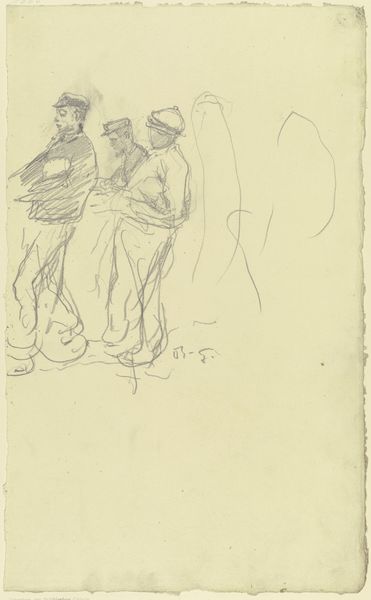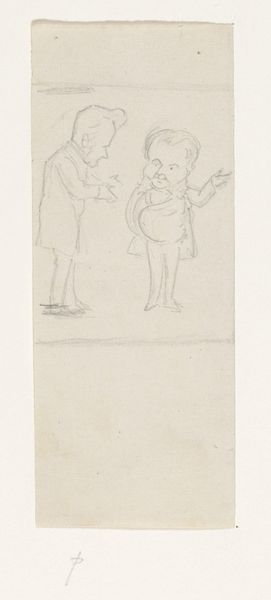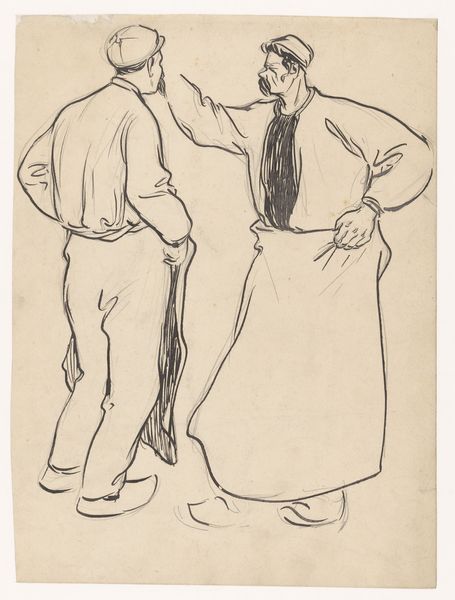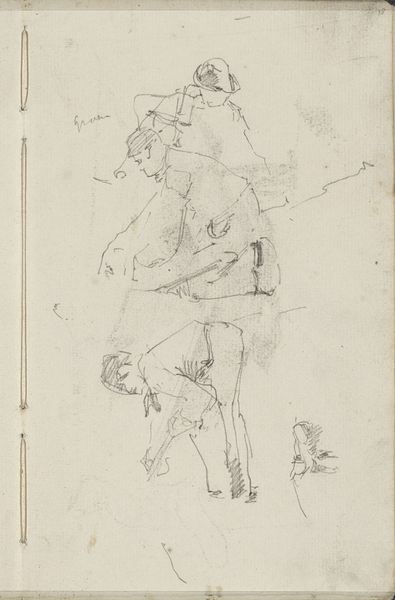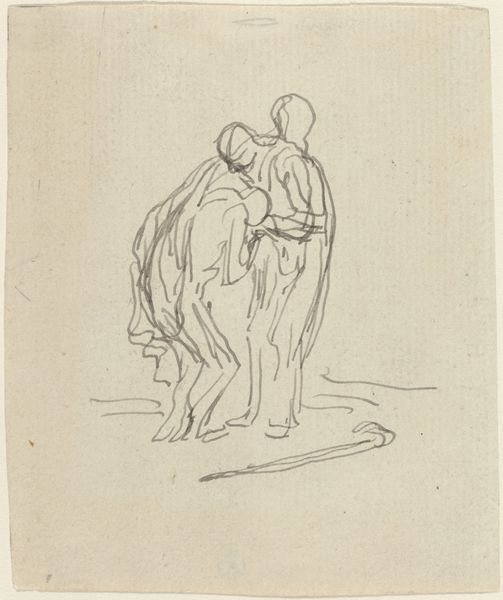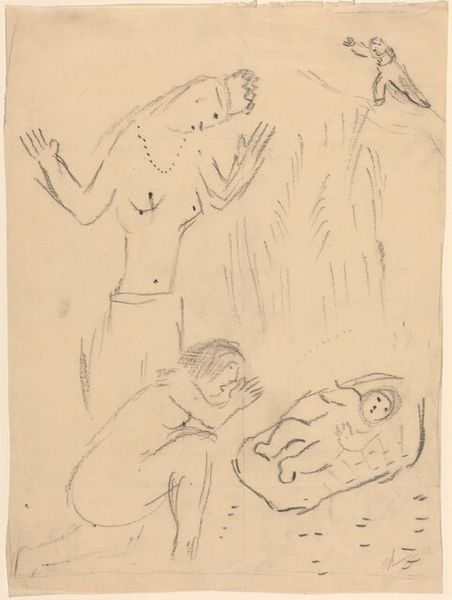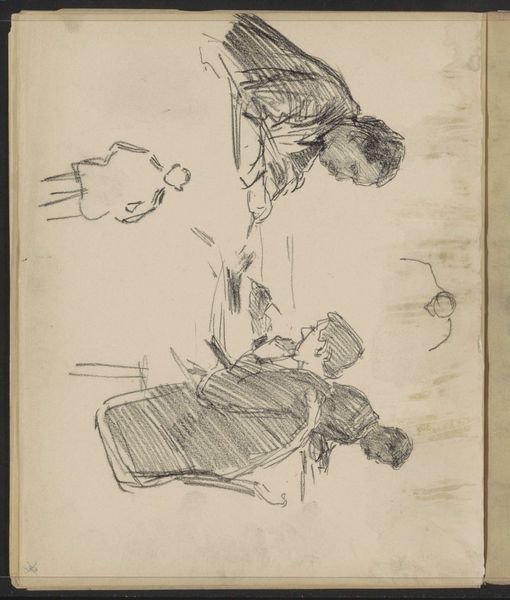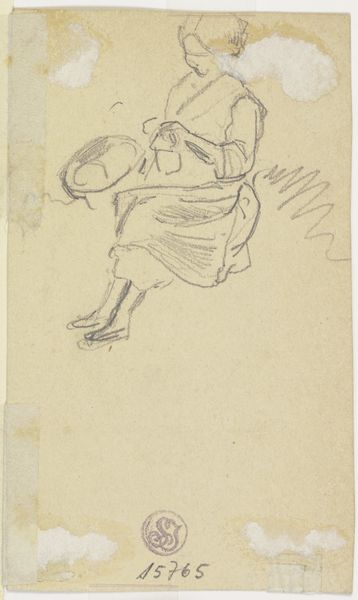
drawing, paper
#
drawing
#
comic strip sketch
#
imaginative character sketch
#
16_19th-century
#
cartoon sketch
#
paper
#
personal sketchbook
#
german
#
idea generation sketch
#
sketchwork
#
ink drawing experimentation
#
sketchbook drawing
#
storyboard and sketchbook work
#
sketchbook art
Copyright: Public Domain
Editor: Here we have Paul Konewka’s "Nick Bottom mit Eselskopf und Tom Snout," a drawing from around 1867-1868, rendered in ink on paper. It has such a playful, almost theatrical quality. What captures your attention most about this piece? Curator: I see the immediate influence of theatrical caricature and the rise of bourgeois entertainment. This sketch reflects a moment where Shakespearean characters are becoming part of popular visual culture, disseminated through prints and accessible imagery. It’s not high art; it's about bringing literature to the masses. Note how the figures are labelled with handwriting alongside them. Who do you think its audience was at that time? Editor: Well, I guess people who loved plays! But I can also see why those less literate still may appreciate that sort of sketch because of its humorous tone, despite it depicting an important figure from canonical play. Curator: Exactly. This speaks to art's democratization. Konewka utilizes accessible caricature. Art isn’t just for the elite anymore, it's entertainment for growing middle classes and it also plays a huge role for public knowledge since imagery accompanies printed stories. It also helps those less literate to appreciate canonical dramas that they don't have resources to enjoy at that time. Now, this is located at the Städel Museum. Does the display of "low brow art" surprise you? Editor: Yes, somehow it is. It suggests this museum, initially known for classical art, seeks to reflect society's expanded ideas about what is valuable. Perhaps showcasing how cultural icons, even those initially circulated through popular forms like comic strips or caricature, evolve and become historically relevant. Curator: Precisely! It emphasizes that art is a constantly negotiated term, reflecting societal values and the power structures determining cultural significance. Thanks for making these points more vivid! Editor: Thanks, I've learned a lot more from your fresh analysis of what makes an artwork have its social standing and cultural values.
Comments
No comments
Be the first to comment and join the conversation on the ultimate creative platform.
